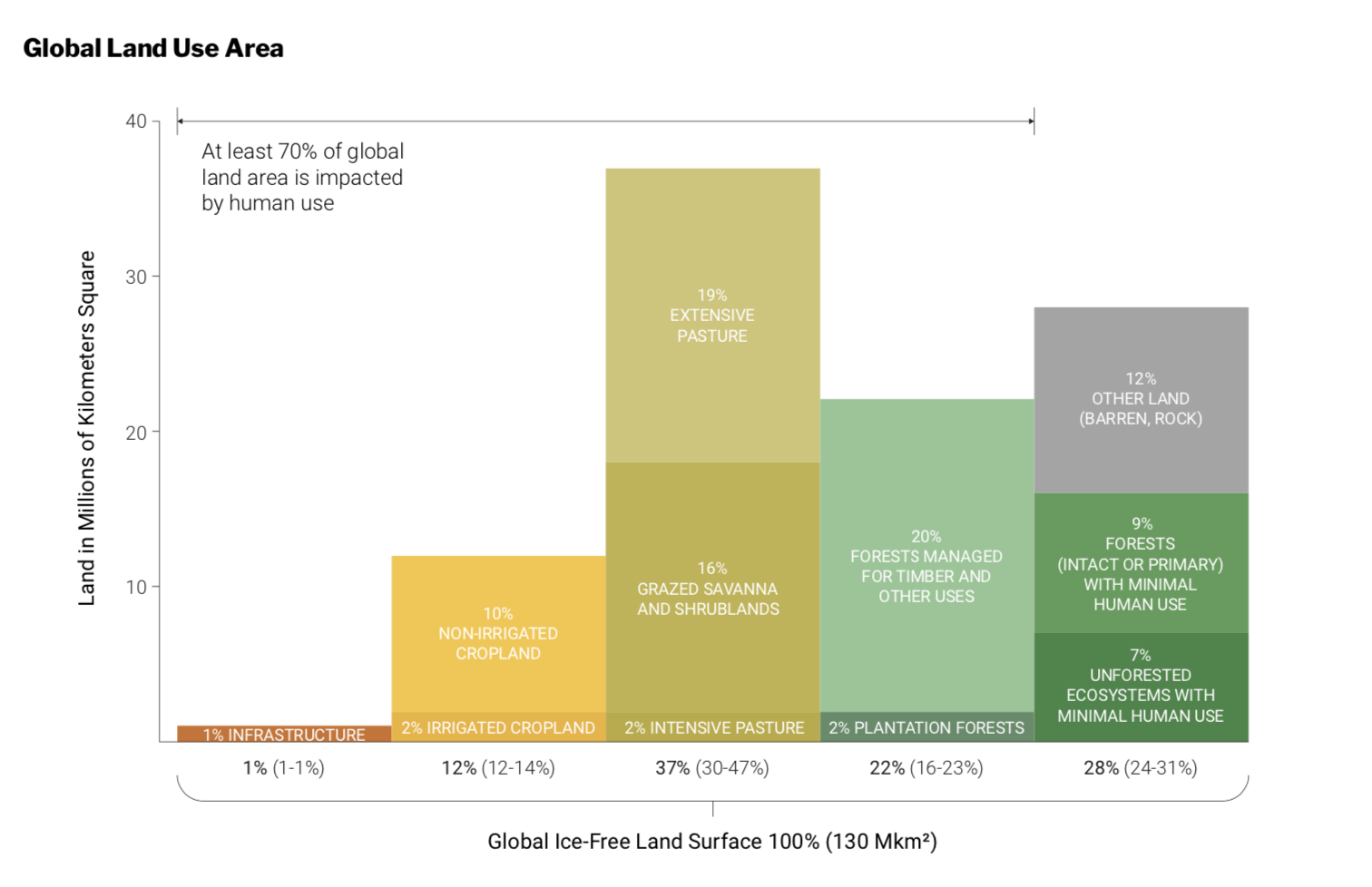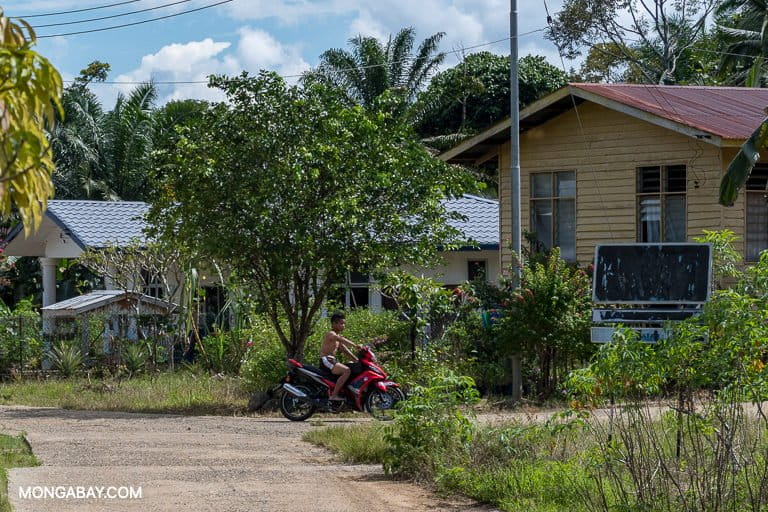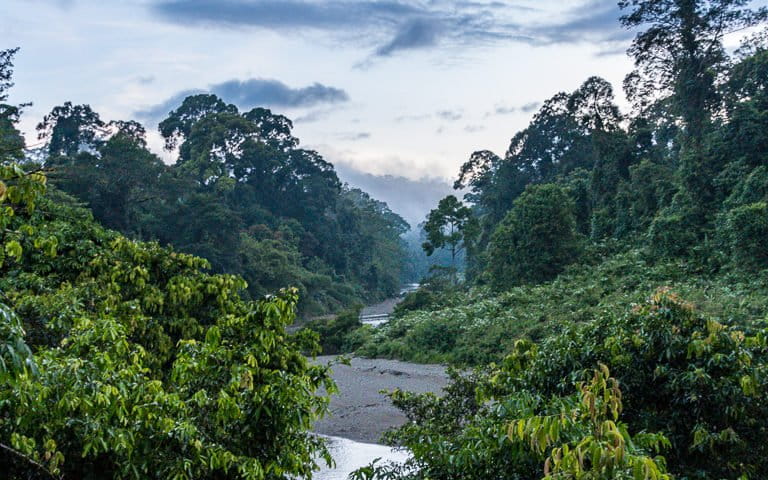There is not enough land to meet many of the world’s climate pledges, says new study


- National climate pledges would collectively require 1.2 billion hectares (about 3 billion acres) of land, researchers have found in a new study, The Land Gap Report.
- More than half of this land is already currently used for something else. This demand for land will put pressure on ecosystems, Indigenous lands, small farmers and food security.
- Protecting existing forests and securing Indigenous and community land rights are more effective than carbon capture plans requiring land-use change, including reforestation.
- Indigenous leaders are calling for updates and transparency at the upcoming U.N. climate conference, COP27, concerning funding pledges at last year’s conference.
Carbon removal plans relying on land do not add up, says a new report. Or, more accurately, researchers have now actually added them up, but countries’ climate pledges would require millions of square kilometers of land – putting pressure on ecosystems, Indigenous peoples, and food security.
Climate pledges made by countries around the world would collectively require 1.2 billion hectares (about 3 billion acres) of land – a total land area larger than the United States – to meet targets laid out in national plans, researchers found in the new study. It is simply not a feasible or advisable endeavor, according to the study, The Land Gap Report.
Land is a common element in climate schemes because carbon dioxide removed from the atmosphere and stored by forests and other ecosystems is calculated to offset emissions produced elsewhere. Restoration of degraded ecosystems would account for close to half of the land area required to meet climate pledges, but more than half would require lands that are already currently used for something else, the study authors noted.
Using those “new” lands for reforestation or other land-use change measures could displace Indigenous peoples, communities, or small farmers.
More than 20 researchers from around the world contributed to the report. The study was published Tuesday by Melbourne Climate Futures, an interdisciplinary climate research initiative at the University of Melbourne.
“This study reveals that countries’ climate pledges are dangerously over-reliant on inequitable and unsustainable land-based measures to capture and store carbon,” said Kate Dooley, lead author of the report.
“Clearly, countries are loading up on land pledges to avoid the hard work of steeply reducing emissions from fossil fuels, decarbonizing food systems and stopping the destruction of forests and other ecosystems,” Dooley, a researcher at the University of Melbourne, said in a statement.
The researchers are calling on countries and other actors to prioritize the steep cuts in fossil fuel emissions without which global temperature increase thresholds cannot be met.
Conserving primary forests, transforming food systems towards agroecology and securing the land rights of Indigenous peoples and local communities (IPLCs) are among the key complementary measures examined in detail in the report. About each hectare of IPLC land in Latin America sequesters an average of 30 metric tons of carbon every year, about twice as much as lands outside IPLC protection.

“One of the main issues for all of us who got involved is precisely that there are so many pledges and not all of them but many, many pledges have something to do with land,” said Anne Larson, principal scientist and team leader of governance, equity and wellbeing at the Center for International Forestry Research & World Agroforestry, CIFOR-ICRAF.
“If you add up the land area, there just isn’t enough. There certainly isn’t enough to do all this and it’s fundamentally a distraction from what actually has to happen, which is more fundamental changes in our whole economic model,” Larson, lead author of the report chapter on Indigenous and community land rights, told Mongabay.
Taking land from who?
Land-based climate measures that do move forward will probably perpetuate dispossession and other injustices if they are not based in an understanding of the history and power dynamics related to Indigenous and local community ties and rights to lands, according to the report. Despite growing research and awareness regarding how Indigenous and community land and forest rights are critical for climate change mitigation, the issue is usually absent from climate pledges.
“Many of the goals have to do with tree planting and these very specific biophysical solutions that don’t even take into account livelihoods, safeguarding people’s rights, or simply who is actually living on these lands that they’re presumably pledging to do something with,” said Larson.

“I think part of the issue is that the actual places aren’t being identified. It’s just a pledge with very big numbers without any real substance behind it, trying to make up for or avoid having to actually decrease fossil fuel consumption and address some of the bigger challenges,” she said. “So certainly the question is where are these lands? Where do people think they are? And who is actually living on them?”
On the ground in Central America, the efficacy of forest protection when lands are in the hands of Indigenous peoples has been demonstrated and studied for years, said Levi Sucre, the coordinator of the Mesoamerican Alliance of Peoples and Forests. However, he worries that Indigenous lands and forests without legal recognition are under threat now more than ever.
“Especially now, in the ‘post-COVID’ era, governments are looking at how to reactivate national economies. Instead of seeking different alternatives, they are pursuing the large-scale and indiscriminate exploitation of resources, and that includes forests,” Sucre, an Indigenous Bribri community leader in Costa Rica, told Mongabay.
“The pressure Indigenous peoples are experiencing is alarmingly rising in the region,” he said. “Criminalization is increasing. Spaces for dialogue are diminishing. We are worried.”
The issue of climate change was prevalent in national and global agendas prior to the pandemic but dropped off in Central America during the pandemic. Now, it has been making a comeback in the context of economic recovery efforts, according to Sucre. However, the new push is not rights-based.

“Now we have an additional phenomenon that I categorize as the danger of blood carbon credit trade,” said Sucre. “A vision has arisen in Mesoamerica, led especially by certain large global NGOs for conservation without people, that is driving politicians to strip people of lands without legal tenure and give them to ultra-conservationists.”
Incorporating community lands into pledges
Indigenous leaders and organizations have been advocating at U.N. climate summits for years for governments and funders to recognize and incorporate the role of Indigenous peoples, land rights and access to funding. At the November 2021 COP26 climate summit in Scotland, private donors and a handful of governments announced a pledge to invest $1.7 billion in supporting Indigenous and local community land and resource rights.
It did not take long for concerns and questions to surface as to who would actually receive the funding from the $1.7 billion and other even greater pledges related to Indigenous peoples and local communities. Nearly a year later, many Indigenous leaders still have those same questions.
Joseph Itongwa is one of them. An Indigenous Walikale leader, he is the coordinator of the Network of Indigenous Peoples and Local Communities for the Sustainable Management of Forest Ecosystems (REPALEF) in the Democratic Republic of the Congo. The pledges at the COP26 were heartening, but there has been little clarity since then, he said.
“These promises are still without clarification because there are many questions that arise about the transparency of these funds,” Itongwa told Mongabay. “Who has taken these funds? How are they managed? Have there been consultations so that we can really better benefit from these mechanisms?”


Itongwa hopes the answers will be forthcoming at the COP27 set to take place November 6-18 in Egypt. Indigenous peoples and local communities have been securing land and forest rights in the Democratic Republic of the Congo in the form of community forest concessions. In the face of both progress and challenges, they have detailed plans for how funding could support forest rights, sustainable management and local livelihoods, said Itongwa.
“It is not a favor,” he said, asserting that Indigenous peoples are victims, not drivers of climate change and that so much more could be accomplished with support and resources – a sentiment Larson shares.
Banner image: Rice farmer Pranee Inpanyo harvests one of her rice fields. Her village is located in the vicinity of Mae Moh power plant and she complains that her crops are badly effected by the pollution from the power plant, much of which she now has to throw away. Image © Luke Duggleby / Greenpeace.
Source
Language of the news reported
Copyright © Source (mentioned above). All rights reserved. The Land Portal distributes materials without the copyright owner’s permission based on the “fair use” doctrine of copyright, meaning that we post news articles for non-commercial, informative purposes. If you are the owner of the article or report and would like it to be removed, please contact us at hello@landportal.info and we will remove the posting immediately.
Various news items related to land governance are posted on the Land Portal every day by the Land Portal users, from various sources, such as news organizations and other institutions and individuals, representing a diversity of positions on every topic. The copyright lies with the source of the article; the Land Portal Foundation does not have the legal right to edit or correct the article, nor does the Foundation endorse its content. To make corrections or ask for permission to republish or other authorized use of this material, please contact the copyright holder.
